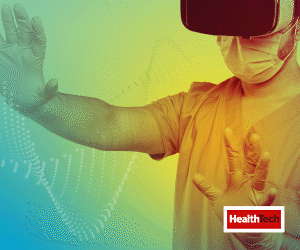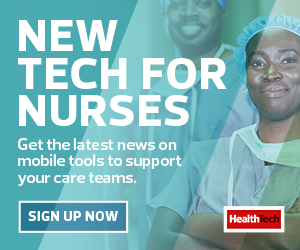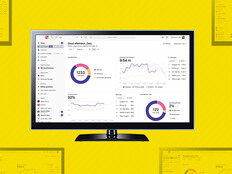As frontline caretakers, nurses rely on a wide range of technologies to enhance patient care.
Which is why they should be a part of equipment purchasing decisions that can directly affect their work, says Patricia Sengstack, an associate professor of nursing at the Vanderbilt University School of Nursing.
“There are more of us than any other healthcare provider,” notes Sengstack, who is also a nursing informatics executive at Vanderbilt’s medical center and a past president of the American Nursing Informatics Association. “I think because nurses tend to be quiet and not as vocal as we could be — and should be — we don’t get enough attention.”
Fortunately, that is changing. Sengstack is helping enhance an already collaborative culture at Vanderbilt, where nurses are encouraged to share ideas that can shape the use of existing tools as well as devices yet to be developed. The approach mirrors Sengstack’s core executive philosophy: Don’t make decisions without nurses at the table.
She recently spoke with HealthTech about that valuable connection.
HEALTHTECH: Overall, how often are nurses involved in making technology decisions?
My answer would be not nearly often enough. I remember one of my informatics teachers saying, “You need to have the people who are going to be using the system directly involved with decision-making regarding selection and design, or you’ll have a hard time being successful.”
I think places are starting to get better and developing forums of shared governance. I’ve been one of the leaders in developing that structure for nurses and technology at Vanderbilt. We went to a new electronic health record in 2017, for example, so when our analysts take any changes to the people that handle the configuration, they say, “Wait a minute — has this gone through the nursing committee?” I do a little fist pump and say, “Yes, OK. Very good.”
One of the really cool things that we have at Vanderbilt is something called the Wond’ry. It’s this huge space connected to the new engineering and sciences building that helps facilitate innovative projects — a place where you can say, “I’ve got an idea, but I don’t know exactly how to make it happen.” It’s for every discipline, not just nurses, and collaboration is encouraged.
HEALTHTECH: What modern technology has had the biggest impact on nursing?
The electronic health record is the focus of all points of care delivery. Nurses aren’t just entering data into the EHR. They are ordering things, retrieving results, reviewing the history and entering data. They’re also looking at reports and analytics to see how they are doing.
Patients are using the electronic health record too, meaning the patient portal. Nurses are always trying to encourage engagement with patients — not just when they’re acutely ill in the hospital but to improve wellness on a day-to-day basis. That can be done a lot better via a portal than waiting for them to come in for a 15-minute clinic visit or a hospital stay.
HEALTHTECH: If you could wave a magic wand and improve EHRs, how would you do it?
Usability is where I think most vendors fall short. Sometimes these systems are so complex; the screens are graphically dense and you can’t tell what you’re supposed to click on. They’re not intuitive; you’ve got to fill in a blank by clicking two screens, getting some information, clicking two screens back, then entering the data.
There’s also the issue of interoperability. The data doesn’t really do a good job at following a patient wherever they go, regardless of where care was delivered. So, we end up doing a lot of redundant testing and duplication of asking questions.
READ MORE: Learn how to get the most out of your EHR implementation.
HEALTHTECH: How has the increased emphasis on mobility affected nursing?
I don’t think we can say yet that we have nationwide critical mass on mobility efforts. We have it in some pockets, and I think that nurses are asking for more.
We’re starting to see our vendor partners creating better tools that can be used on cellphones and laptops. Some of the vendors that create our electronic health record will admit that the representation, or the graphic user interface, is not created for a mobile platform.
We want our nurses to be mobile. We don’t want them to be tethered to a workstation on wheels that is cumbersome, that is always needing to be plugged in because the battery runs out and that can be difficult to get into rooms that are smaller, especially two-patient rooms. I think those machines are going to become dinosaurs.
We’re also starting to look at efficiencies related to being able to contact someone via text message rather than going and finding a phone. It’s so much better when you have text messaging between nurses and between providers, and we’re starting to see efficiencies there.
HEALTHTECH: What other technology do you see influencing the profession?
Virtual reality is going to be a game-changer. We often have to train nurses on a new skill on the front lines; we could use VR to put a group of them through a simulation.
A lot of places also use simulation manikins. I don't know if you’ve seen any of those recently, but they’re so much more sophisticated now, with all kinds of computerized sensors. They deliver babies, and you can start IVs with red liquid that comes out if you hit the vein.














